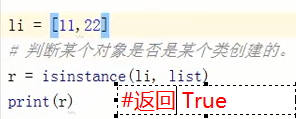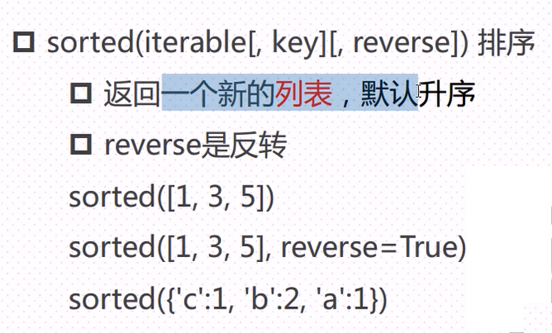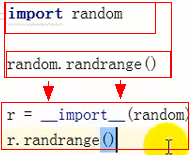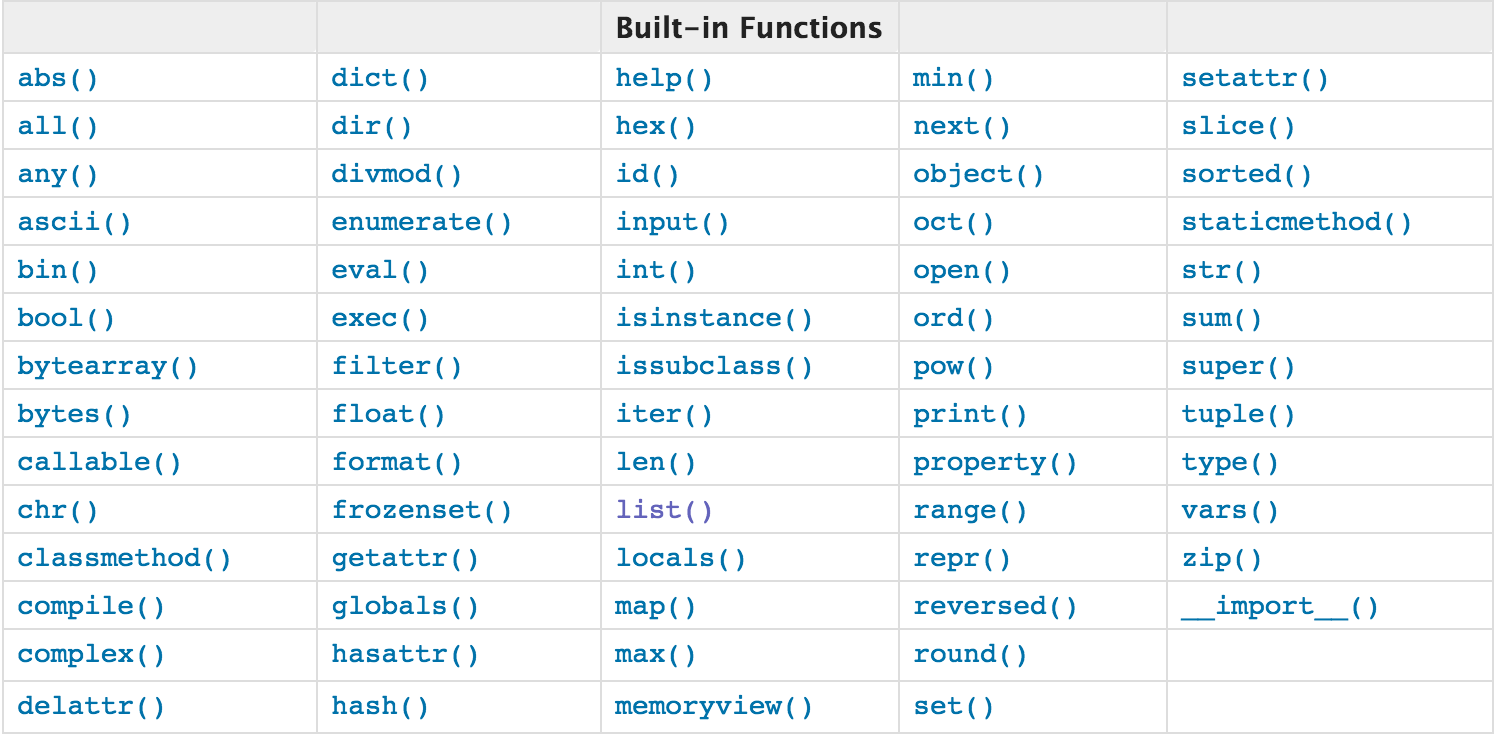python的内置函数

## abs() # 绝对值
Return the absolute value of a number. The argument may be an integer or a floating point number. If the argument is a complex number, its magnitude is returned.
译文:返回一个数字的绝对值。参数可以是整数或浮点数。如果参数是复数,则返回它的smagnitude
## len() # 返回一个集合类型的元素个数。
## all() # 循环参数,如果每个元素都为真,那么all返回值为真
假的东西:bool (0) = False # 数字 0 为假
bool (None) = False # 返回值为假
bool ("") = False # 空字符串为假
空值: 空字符串""、空列表[]、空元组()、空字典{}、空集合set{} 都为假。
## any() # 只要有一个为真就是真。
## ascii() #只要执行了ascii,它就会执行去对象的类中找 __repr__ ,获取其返回值
## max() min()

## bin() # 二进制 binary
## oct() # 八进制 octonary
## int() # 十进制 decimalism
## hex() # 十六进制 hexadecimal
b = bin(111) # 二进制
print(b)
# 0b1101111
o = oct(111) # 八进制
print(o)
# 0o157
i = int(111) # 十进制
print(i)
# 111
h = hex(111) # 十六进制
print(h)
# 0x6f
#######################
## int(10) 讲10进制转换为其他进制
a = int("1111",base=2)
print(a) # 15
b = int("123",base=8)
print(b) # 83
c = int("11e",base=16)
print(c) # 286
## bool() #判断真假,本质上是将一个对象转换成布尔值。
## bytes() #字节
## bytearray() #字节列表,(列表里的每一个元素都是一个字节。)
字节和字符串之前的转换
bytes("xxx",encoding="utf-8")
# 一个字节,8位,258种可能
## chr() # 接收一个数字,找到对应的字符
## ord() # 接收一个字符,找对对应的数字
c = chr(60)
print(c) # <
o = ord('_')
print(o) # 95
# 随机验证码
# 65 到 90 就是 A - Z
# 生成一个随机数,65-90
# 数字转换成字母,
# import random
# i 大于等于65 ,小于91
# i = random.randrange(65,91)
# temp = ""
# for i in range(6):
# rad = random.randrange(65, 91)
# c = chr(rad)
# temp += c
# print(temp)
## 6位的随机验证码
import random
# temp = ""
# for i in range(6):
# # 生成 0 - 4 的随机数
# num = random.randrange(0, 4)
# # 如果随机数是 1 或者是 3 ,那么就再验证码中生成一个 0 - 9 的随机数字
# # 否则,验证码中生成一个随机的字母
# if num == 3 or num == 1:
# rad1 = random.randrange(0,10)
# temp = temp + str(rad1)
# else:
# rad2 = random.randrange(65,91)
# c2 = chr(rad2)
# temp = temp + c2
# print(temp)## callable() # 表示一个对象是否可执行
## classmethod() # 面向对象的时候会用到
## compile() #编译用的,会接收一个字符串,把字符串编译python可以执行的代码
## complex() #复数
### attr 反射 #
## delattr() #
## getattr() #
## hasattr() #
## setattr() #
## dict() # 字典
## dir() # 查询类提供的功能
## help() # 详细的找的提供的功能,有介绍
## divmod() #

# 分页的时候用
r = divmod(100,30) # 一共有100条数据,每页30条,需要几页
print(r) # (3, 10) # 需要3页,还剩10条数据
x,y = divmod(54321, 10000)
(5,4321)
## enumerate #



## eval()
#可以执行一个字符串形式的表达式,eval是有返回值的。
ret = eval("1 + 3")
print(ret) # 4
ret = eval("102 + 98 + 69")
print(ret) # 269
ret2 = eval("a + 60",{"a":99})
print(ret2) # 159
## exec() #
# 执行py代码,没有返回值
exec("for i range(10);print(i)")
## filter() # 过滤
# 接收两个参数,第一个是一个函数,第二个是可以迭代的对象
# 循环可迭代的对象,获取每一个参数,让每一个参数都作为函数的参数。


## map() #函数,可以迭代的对象
# 让所有的数都统一做个操作

#
## float() #
## format() #
## frozenset() #
## hash() # 哈希值
## isinstance # 判断某个对象是否是某个类创建的


## issubclass() # 看看是不是子类

## iter

iter 和next 应用

## open() # 打开文件的
## pow() # 求幂的
i = pow(2, 10) # 2 的 10 次方
print(i) # 1024
## round() # 四舍六入五取偶
## slice() #
## sorted() # 排序
# 排序的时候只能是同一种类型,多种类型会出错
# 立即返回一个新的列表。

## staticmethod()
## sum() # 求和
sum(iterable[, start])

## type() # 查看类型的
## vars() #
## zip() #


## __import__(random) # 导入模块使用
























 696
696











 被折叠的 条评论
为什么被折叠?
被折叠的 条评论
为什么被折叠?








